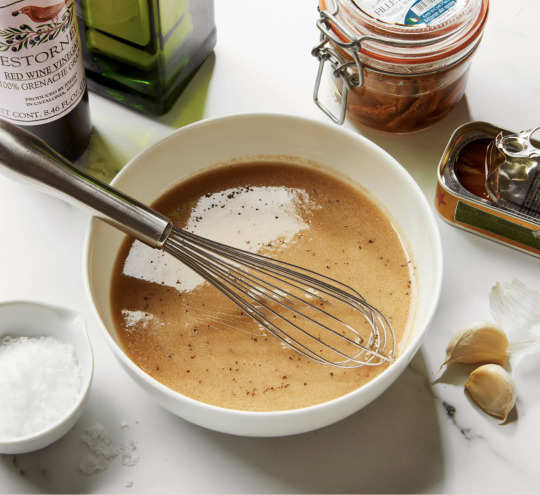#epicurious
Text

3-Minute Molten Double Chocolate Mug Cake
#3 minute#molten#double#chocolate#mug cake#molten lava#food#dessert#baking#gooey#recipe#punchfork#Epicurious
401 notes
·
View notes
Video
youtube
How to Slice Every Meat (Charcuterie, Deli, Salami & More) | Method Mastery | Epicurious
4 notes
·
View notes
Text
Found a YouTube Version so:
YouTube Wrapped 2023
Starting with no surprises here

Thought my most watched would be the Dan and Phil Halloween baking, forgetting about this favourite

When did Dan and Phil come back? Oh yeah...

Dan only made it to the 4th spot because they just haven't uploaded as much lol

#dan and phil#dan and phil games#dnpg#thetimtracker#amazingphil#dan howell#epicurious#emma chamberlain#phan#chyler leigh
19 notes
·
View notes
Text
youtube
I've been really enjoying this series, especially the test to see how well the gadget works with an oiled-up non-dominant hand, symbolizing dexterity impairments.
It's amazing how many gadgets can be improved with that simple test.
#cooking#kitchen gadgets#kickstarter#design#engineering#testing#usability#disability#dan formosa#well equipped#epicurious
5 notes
·
View notes
Text

"De Rerum Natura" (Latin: [deː ˈreːrʊn naːˈtuːraː]; On the Nature of Things) is a first-century BC didactic poem by the Roman poet and philosopher Lucretius (c. 99 BC – c. 55 BC) with the goal of explaining Epicurean philosophy to a Roman audience. The problem was that Epicureanism had already been exported to Rome but it wasn't accepted by the higher social classes, leaning towards stoicism, that thought Epicurus' philosophy was a lame invitation to the pleasures of flesh.
Nothing more wrong!
Epicurean philosophers wanted to prescribe moral antidotes against the major fears of humanity, leading it to happiness: the first four Principal Doctrines from Epicurus, called "Tetrapharmakos", are recommendations to avoid anxiety or existential dread.
1) Don't fear god
2) Don't worry about death
3) What is good is easy to get
4) What is terrible is easy to endure
In fact:
1) A happy and eternal being has no trouble himself and brings no trouble upon any other being; hence he is exempt from movements of anger and partiality, for every such movement implies weakness
2) Death is nothing to us; for the body, when it has been resolved into its elements, has no feeling, and that which has no feeling is nothing to us.
3) The magnitude of pleasure reaches its limit in the removal of all pain. When pleasure is present, so long as it is uninterrupted, there is no pain either of body or of mind or of both together.
4) Continuous pain does not last long in the body; on the contrary, pain, if extreme, is present a short time, and even that degree of pain which barely outweighs pleasure in the body does not last for many days together. Illnesses of long duration even permit of an excess of pleasure over pain in the body.
To the Greek philosopher Epicurus, the unhappiness and degradation of humans arose largely from the dread which they entertained of the power of the deities, from terror of their wrath. This wrath was supposed to be displayed by the misfortunes inflicted in this life and by the everlasting tortures that were the lot of the guilty in a future state.
Lucretius's task was to clearly state and fully develop these views in an attractive form; his work was an attempt to show through poetry that everything in nature can be explained by natural laws, without the need for the intervention of divine beings. He explores the principles of atomism; the nature of the mind and soul; explanations of sensation and thought; the development of the world and its phenomena; and explains a variety of celestial and terrestrial phenomena.
Why through a poem?
Because he knew that philosophy dissertations, and especially atomism and epicureanism, were hard to understand, comprehend and grasp. So, philosophy is like a medicine: life-saving, but often unpleasant. In order to make someone ingest that medicine, you have to sweeten it, thus the use of poetic form in Lucretius' "De Rerum Natura", which I'll directly quote:
"Sed veluti pueris absinthia tetra medentes/cum dare conantur, prius oras pocula circum/contingunt mellis dulci flavoque liquore,/ut puerorum aetas improvida ludificetur labrorum tenus, interea perpotet amarum/absinthi laticem deceptaque non capiatur,/sed potius tali facto recreata valescat/sig ego nunc, quoniam haec ratio plerumque videtur/testior esse quibus non est tractata, retroque/ vulgus abhorret ab hac, volui tibi suaviloquenti/ carmine Pierio rationem exponere nostram/ et quasi musaeo dulci contingere melle "
"But as when doctors try to give children the disgusting absinthe, they first sprinkle the rims all around the cups with sweet and blond (liquid of) honey, so that the inexperienced children are deceived to the lips, and meanwhile they drink to the bottom of the bitter juice of absinthe and, though deceived, they receive no harm, but rather regenerated in this way they regain their health, so now, since this doctrine seems too difficult to those who have not dealt with it thoroughly, and the common people flee from it, I wanted to expose my reason to you with the harmonious song of the Pierides"
#roman history#history#rome#literature#philosophy#epicurious#epicurean#epicurus#lucretius#de rerum natura#books and literature#poet#poetry#doctrine#atomism#atheism#happiness
9 notes
·
View notes
Text
Slavoj Žižek nos dice que, si queremos al mundo en que vivimos, debemos quererlo igualmente con toda su mierda. Y cuando nos enamoramos de alguien, ¿Por qué nos fijamos solo en sus virtudes?
El amor de verdad por S. Žižek que es el contrario, es reconocer la imperfección, aceptar la persona con todos sus defectos. El problema es que nos da miedo llegar a enamorarnos.
Para enamorarnos buscamos una persona que tenga unas características muy concretas ¿no? a la carta. Que piense como yo, que le guste las mismas cosas que a mí, que tenga el mismo sentido del humor, que sea del mismo estatus económico que yo.
No queremos asumir riesgos, cuando idealizamos el amor ponemos en el otro lo que queremos ver.
Entonces, amar de verdad es una apuesta arriesgada.
Porque el amor de verdad según S. Žižek, no idealiza al otro. Se trata de querer también la imperfección.
¡Fijaos! ¡Mirad! ¡Mirad que bonita es! ¡La belleza de la basura! ¡Mirad! ¡Pero si es preciosa! ¡Si es preciosa! ¡Amad la mierda! ¡El amor, el amor de vedad, el amor con toda su plenitud!
El amor es espontáneo y no basado en una fantasía ingenua, romántica y naif… italiana.
#cartas de amor#cosas que escribo#escritos#cosas que pienso#poemas de amor#pensamientos#love#developers & startups#amore perduto#texto de amor#sentimientos#platonic#epicurious#amoreterno#notas de amor#citazione amore#frasi amore#frasi d'amore#amore a distanza
5 notes
·
View notes
Text
youtube
Very important information
0 notes
Text

For the Spicy Omelet King in your life, this is a tasty burger with a spicy twist. This burger has all the tastes of a regular burger plus the richness of a sunny-side-up egg and a spicy mayo kick.
Ingredients: 1 lb ground beef. 4 hamburger buns. 4 eggs. 1/2 cup diced onions. 1/2 cup diced bell peppers. 1/4 cup diced jalapeos. 4 slices of pepper jack cheese. 4 tbsp mayonnaise. 2 tsp hot sauce. Salt and pepper to taste. Cooking oil.
Instructions: Preheat your grill or stovetop pan over medium-high heat. In a bowl, mix ground beef with diced onions, bell peppers, and jalapeos. Season with salt and pepper. Form the beef mixture into 4 patties and grill them for about 4-5 minutes per side, or to your desired level of doneness. While the burgers are cooking, heat a separate pan with a bit of cooking oil over medium heat. Crack an egg into the pan and cook it sunny-side-up. Repeat for the remaining eggs. When the burgers are almost done, place a slice of pepper jack cheese on each patty to melt. Mix mayonnaise and hot sauce to create a spicy mayo sauce. Toast the hamburger buns on the grill or in a toaster until lightly browned. Assemble your burgers by spreading the spicy mayo sauce on the buns, adding a cheesy burger patty, and topping it with a sunny-side-up egg. Serve hot and enjoy your Spicy Omelet Burger!
Bianca M
0 notes
Text

The Classic Margarita - Epicurious
Classic Margarita with Fresh Lime Juice
#The Classic Margarita#margarita#lime#recipe#trely#beverage#cocktails#drinks#tequila#salt#Epicurious
0 notes
Text

Starting at midnight EST for 24 hours, DON’T CROSS OUR CLICK-IT LINE, that means no clicks, likes, reshares on:
GQ ❌
Vanity Fair ❌
Bon Appétit ❌
Architectural Digest ❌
Vogue ❌
Allure ❌
Glamour ❌
Epicurious ❌
Self ❌
Condé Nast Traveler ❌
Them ❌
Teen Vogue ❌
[Note that the New Yorker, Wired, etc have their own unions so aren't part of this.]
#union strong#writers#journalists#conde nast#gq magazine#vanity fair#vogue#allure#teen vogue#glamour#them#self#epicurious#architectural digest#rss feed#instagram feed
1 note
·
View note
Text
instagram
📌 Bar Castilléjar
#bar castillejar#spanish tapas#fresh foods#tapas#spanish food#spanish cuisine#bryony perfectly imperfect#lincolnshire restaurants#louth Lincolnshire#spanish food porn#foodflatlay#foodgawker#fork feed#foodbloggerlife#bhg foods#beautiful cuisines#bon appetit#buzz feed food#buzzfeast#epicurious#eeeeeats#louth food#tapas bar#appetizers#lincoln bloggers uk#feeling snacky#food heaven#tapas food#spanish restaurant
0 notes
Video
youtube
Trying Every Type Of Potato | The Big Guide | Epicurious
1 note
·
View note
Text

level 3 is supposed to be the best or whatever, but that BLT is. fucking tragedy. How the fuck are you going to eat it.
#homemade 'bacon' that's an inch thick#fried green tomato#you'd need to unhinge your jaw like a python to take a bite#everyone other than the level 1 guy is wrong in this instance#epicurious
0 notes
Photo

Japanese Thirst Killer !
Ingredients:
Makes 1
3 oz. grape juice
¾ oz. orgeat
1 tsp. acid phosphate
2 dashes Angostura bitters
2 oz. club soda, plus more to taste
Pineapple slice (for serving; optional)
Lets get started:
Add 3 oz. grape juice, ¾ oz. orgeat, 1 tsp. acid phosphate, and 2 dashes Angostura bitters to a cocktail shaker and fill with ice; seal shaker and shake until chilled, about 5 seconds.
Add 2 oz. club soda to the bottom of an ice-filled Collins glass. Strain grape juice mix into glass, then top with additional club soda to taste. Stir with a long bar spoon several times to integrate. Garnish with a pineapple slice if desired.
Courtesy: Epicurious
This article was not sponsored or supported by a third-party. A Cocktail Moment is not affiliated with any individuals or companies depicted here.
#art#design#cocktail recipes#Cocktails#drinks#orgeat#acid phosphate#pineaple#japanese#angostura#mocktail#killer#epicurious#drink
26 notes
·
View notes
Photo

Layered Samosa are a speciality of south Indian muslim cuisine. These samosas with beef kheema filling are quickly made when a guest comes over and are served with tea. In Ramadan they are enjoyed at Ifthar. These samosas are fried with a different technique. While frying them the oil is carefully splashed on the layered side which exposes their layers. The recioe is on my blog. Please click on the link in my profile for the recipe. #ramadaan #ifthar #indianfood #samosas #kheemasamosa #tasteofindia #southindiancooking #ramadancooking #foodboggersca #canadianfoodblogger #fbcigers #foodstagram #epicurious #mamasecretrecipes (at Brampton, Ontario) https://www.instagram.com/p/CqUTzgDjtHs/?igshid=NGJjMDIxMWI=
#ramadaan#ifthar#indianfood#samosas#kheemasamosa#tasteofindia#southindiancooking#ramadancooking#foodboggersca#canadianfoodblogger#fbcigers#foodstagram#epicurious#mamasecretrecipes
1 note
·
View note
Photo

Anchoïade | Patricia Wells
As a special treat during my cooking classes in Provence, we often have a catered picnic lunch under the pine trees near the belvedere above the village of Gigondas. It is chef Johannes Sailer and his staff who drive up the hill (we often hike) and deliver a sumptuous picnic of fresh foods, usually including a giant platter of vegetables to accompany this exquisite anchovy dip, a typical Provençal sauce made up of salt-cured anchovies, olive oil, vinegar, and garlic. I like to serve anchoïade with freshly steamed whole cauliflower showered with a touch of fresh parsley from the garden.
Ingredients
Makes about 1¼ cups
8 plump, salt-cured whole anchovies (or 16 oil-packed filets)
2 plump cloves garlic, peeled
2 tsp. best quality red wine vinegar
1 cup extra virgin olive oil
Fine sea salt
Freshly ground black pepper
Instructions
Step 1
If you’re using salt-packed anchovies: At least 5 hours (and up to 24 hours) before preparing the anchovy dip, soak the anchovies: Rinse them, cover with cold water, and refrigerate until ready to prepare the dip.
Step 2
Remove the anchovies from the water, drain, and separate into fillets, pulling them apart and removing the central bones. Rinse and drain.
Step 3
In the bowl of a food processor or blender, combine the drained anchovies, garlic, and vinegar. Process to blend. With the machine running, slowly pour the oil through the tube and process again. Season to taste. Stir again before serving.
0 notes